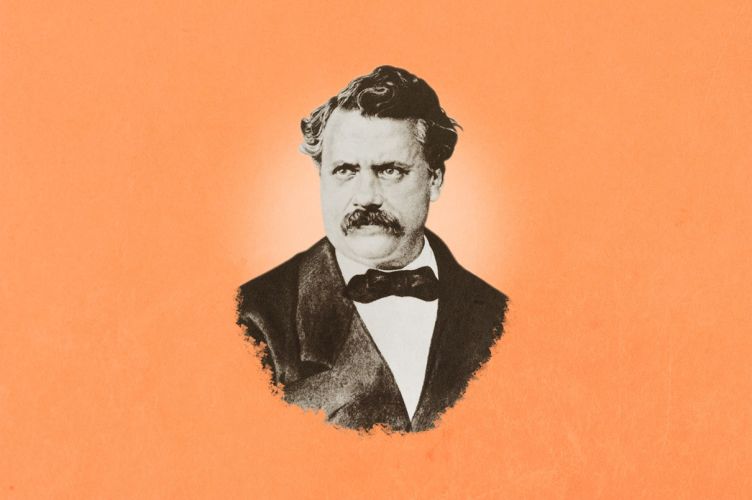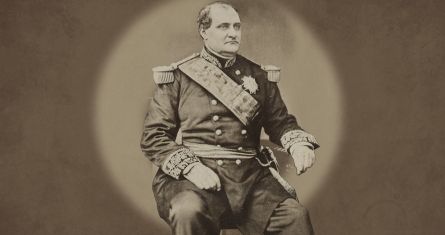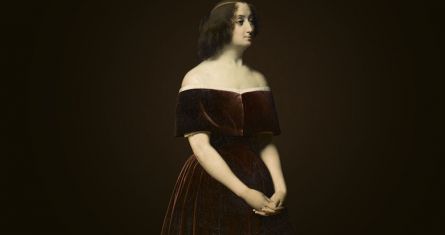Note on the connections between ESCP and the trunk-master
Travel trunks business in the 19th century
At the time, this business was being boosted by new means of transport which enabled wealthy city dwellers to travel. To get the most from this growing market, Louis Vuitton launched an innovation which was to prove a considerable success: the flat-top trunk, which was easier to stack than the traditional domed-lid models. He expanded quickly thanks to the success encountered by his flagship product.
Vuitton in the second part of the nineteeth century
In 1859, he transferred his workshop and its some twenty employees from Paris to Asnières on the banks of the Seine, to capitalise on river transport.
It was at this location–which still exists today–that the students of École Supérieure de Commerce de Paris would go to perfect their technical instruction from time to time, in the second part of the nineteenth century. They visited the workshop at least five times in the 1870s, 80s and 90s. It may be reminded that at that time it was mandatory for all the school’s students to follow technology courses which consisted in teaching them how the establishments, which some of them would be led to run or manage later, operated. Given the economy of the time, the courses were especially focused on establishments in the manufacturing sector, such as mills, workshops, and factories1. The students made “industrial visits” guided by their lecturers, in and around Paris, but also elsewhere in France, in the Aisne and Pas-de-Calais regions, and abroad, in Belgium and the Netherlands.2
Visits to the Vuitton workshop
Visits to the Vuitton workshop were obviously a success as they were repeated several times. One former student, André Delavaud (class of 1897), was even recruited there. He was passionate about this business and foresaw the boom in the trade at a time when beach and thermal tourism were experiencing significant growth. With some of his fellow students, he created a committee to advocate the introduction of trade-specific courses at the school.
The Louis Vuitton's project with the school
Naturally, he went to the management of the École Supérieure de Commerce with his project. The idea was to create a “tannery” business section where courses would be taught on tannery techniques, commercial techniques for selling trunks in France and abroad, and also legal instruments to protect models and brands from counterfeiting, which was starting to develop. Even though this request was made several times by the School’s alumni during the 1890s, it was never approved by the management. Indeed, at the time, the school believed that its mission was to train traders who were generalists rather than specialists.3
What happens next?
If this strategic initiative did not see the light of day, it was therefore on account of the history of the school. Could the school’s management have predicted that this business was to become one of the emblems of French luxury worldwide? Although the future proved them wrong, the ESCP management was to make up for this missed opportunity and today, through specialisation options and some of its Specialized Masters programs, the school has educated several generations of students who have followed in the footsteps of André Delavaud since the last third of the twentieth century.
1Source: “Minutes from the École Supérieure de Commerce de Paris administrative committee; session of November 13, 1880”, p.357. Archives of ESCP.
2Source: The Meunier chocolate factory, ship-owner workshops and the first Peugeot plant were visited by the students.
3Source: “Minutes from the École Supérieure de Commerce de Paris administrative committee; session of March 12, 1898”, pp.291-292. ESCP Archives. “Minutes from the École Supérieure de Commerce de Paris administrative committee; session of March 31, 1898” , pp.292-293. ESCP Archives, “Minutes from the École Supérieure de Commerce de Paris administrative committee; session of June 11, 1898”, pp.294-295. ESCP Archives. “Project for the creation of a special leather and tannery business section at École Supérieure de Commerce de Paris”. French National Library, side 4-V PIECE-47778.



